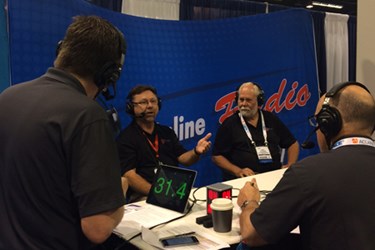The Evolution Of Sluice And Slide Gates

You might not think that sluice gates would involve a lot of technology, but significant R&D has been invested in their improvement.
At least that’s the case with products from Waterman Industries, which has been in business for over a century. They provide a variety of gates – sluice gates, slide gates, and drainage gates among them – for the water/wastewater industry.
Tim Shoemaker and Mike Stroben of Waterman sat down with Water Online Radio to talk the different functionalities and benefits of the Waterman line, and how a utility can tell if a gate needs replacing.
“A lot of plants have sluice gates from the old days, from the early '70s and '80s. The guys will see that they are turning the hand wheel, and it's tightening … but you still have a lot of leakage – signs that the seats are going bad and they've been worn out,” said Stroben.
And the new models are far superior than what you might be replacing.
The biggest change, according to Stroben, has been the change from “old, grey-iron gates” to ductile iron. “Ductile iron gives you a lighter, stronger – far stronger – cast-iron technology … and longer-lasting,” he said. “We’re going to see 50- and 80-year gates instead of 30- and 40-year gates once it goes into a wastewater treatment plant.”
Though they are lighter (and thinner), the new gates meet industry requirements for thickness. “They still hold AWWA standards to a tee,” said Stroben.
Learn more about what goes into sluice and slide gates these days – including earthquake-proofing – by tuning into the full interview.
